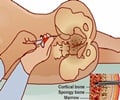Multipotent neural crest cells isolated from zebrafish embryos have been cultured and characterized for the first time by researchers at the Massachusetts General Hospital.

The team took advantage of the sox 10 reporter transgenic model to enrich and isolate the neural crest cells (NCCs), which were subsequently cultured under optimized culture conditions. Cultured NCCs were found to express major neural crest lineage markers such as sox10, sox9a, hnk1, p75, dlx2a, and pax3, and the pluripotency markers c-myc and klf4. The cells could be further differentiated into multiple neural crest lineages, contributing to neurons, glial cells, smooth muscle cells, melanocytes, and chondrocytes. Using the functional cell behavior assays that they developed, the team was able to assess the influence of retinoic acid, an endogenously synthesized, powerful, morphogenetic molecule, on NCC behavior. This study showed that retinoic acid had a profound effect on NCC morphology and differentiation, significantly inhibited proliferation and enhanced cell migration. The data implicate NCCs as a target cell population for retinoic acid and suggest that it plays multiple critical roles in NCC development.
"We hope that our novel neural crest system will be useful to gain mechanistic understanding of NCC development and for cell-based high-throughput drug screening applications" said Dr. Beste Kinikoglu, a postdoctoral fellow in Dr. Liao's laboratory and the study's first author. Dr. Steven R. Goodman, Editor-in-Chief of Experimental Biology and Medicine said "Liao and colleagues have provided the first zebrafish embryo derived NCC pure population in vitro model for the study of neural crest development. I believe that this will be a valuable tool for this purpose".
Source-Eurekalert








